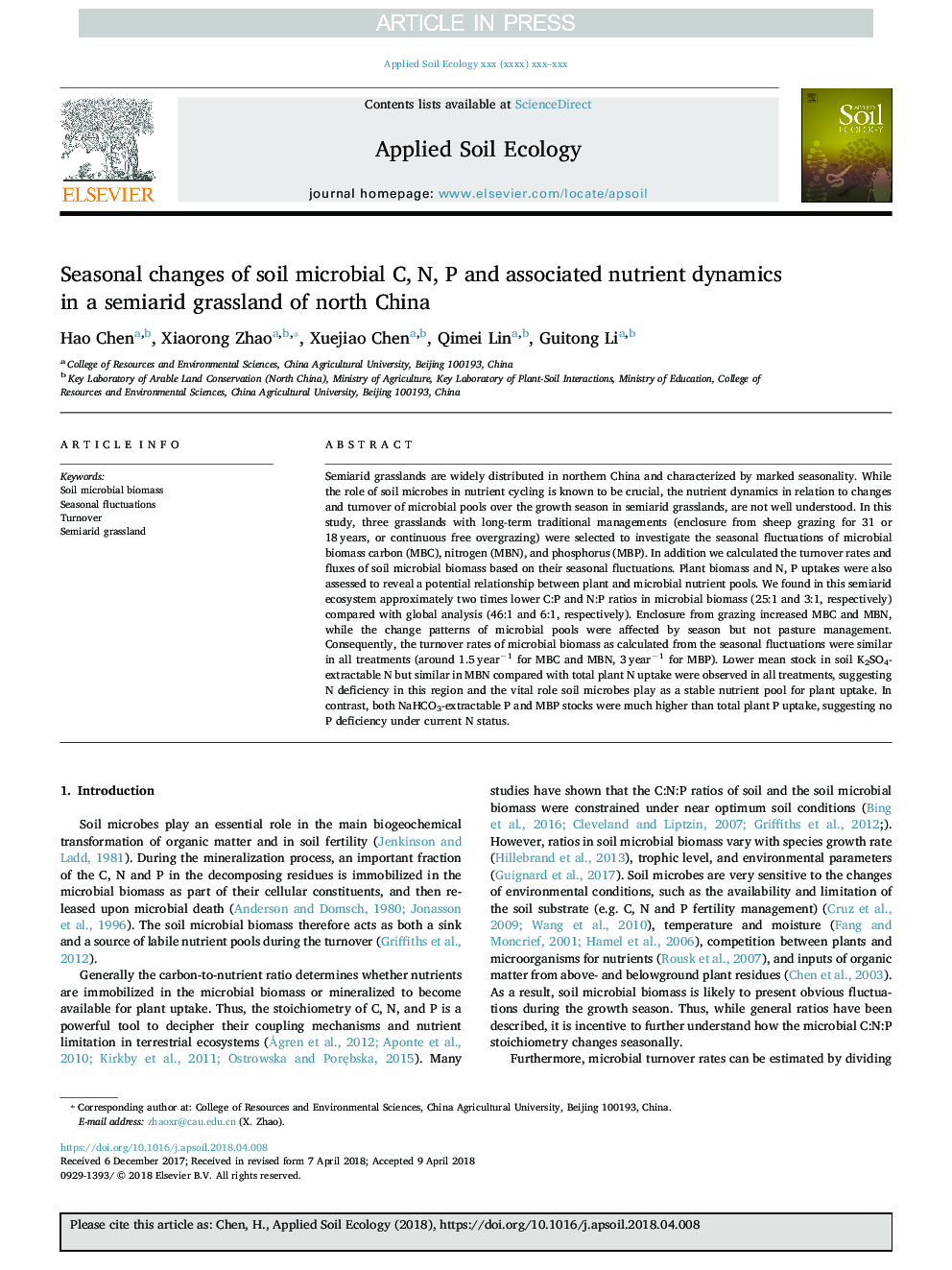| Article ID | Journal | Published Year | Pages | File Type |
|---|---|---|---|---|
| 8846629 | Applied Soil Ecology | 2018 | 9 Pages |
Abstract
Semiarid grasslands are widely distributed in northern China and characterized by marked seasonality. While the role of soil microbes in nutrient cycling is known to be crucial, the nutrient dynamics in relation to changes and turnover of microbial pools over the growth season in semiarid grasslands, are not well understood. In this study, three grasslands with long-term traditional managements (enclosure from sheep grazing for 31 or 18â¯years, or continuous free overgrazing) were selected to investigate the seasonal fluctuations of microbial biomass carbon (MBC), nitrogen (MBN), and phosphorus (MBP). In addition we calculated the turnover rates and fluxes of soil microbial biomass based on their seasonal fluctuations. Plant biomass and N, P uptakes were also assessed to reveal a potential relationship between plant and microbial nutrient pools. We found in this semiarid ecosystem approximately two times lower C:P and N:P ratios in microbial biomass (25:1 and 3:1, respectively) compared with global analysis (46:1 and 6:1, respectively). Enclosure from grazing increased MBC and MBN, while the change patterns of microbial pools were affected by season but not pasture management. Consequently, the turnover rates of microbial biomass as calculated from the seasonal fluctuations were similar in all treatments (around 1.5â¯yearâ1 for MBC and MBN, 3â¯yearâ1 for MBP). Lower mean stock in soil K2SO4-extractable N but similar in MBN compared with total plant N uptake were observed in all treatments, suggesting N deficiency in this region and the vital role soil microbes play as a stable nutrient pool for plant uptake. In contrast, both NaHCO3-extractable P and MBP stocks were much higher than total plant P uptake, suggesting no P deficiency under current N status.
Related Topics
Life Sciences
Agricultural and Biological Sciences
Ecology, Evolution, Behavior and Systematics
Authors
Hao Chen, Xiaorong Zhao, Xuejiao Chen, Qimei Lin, Guitong Li,
